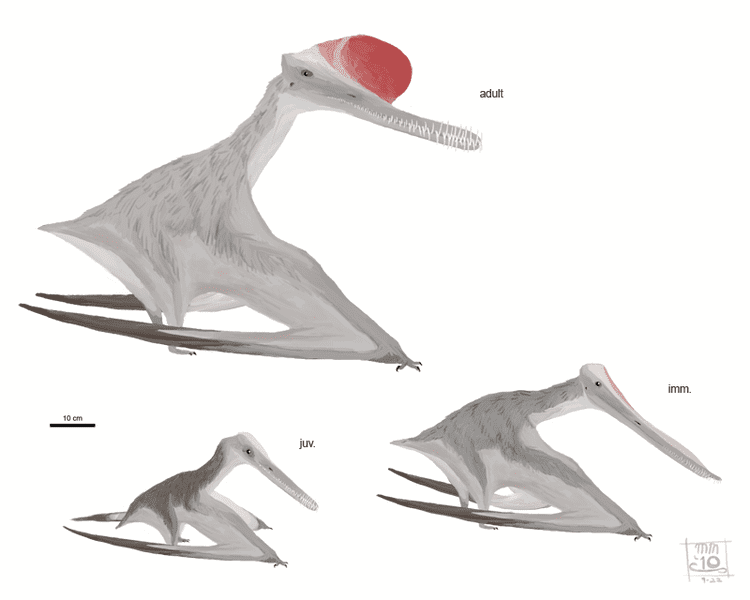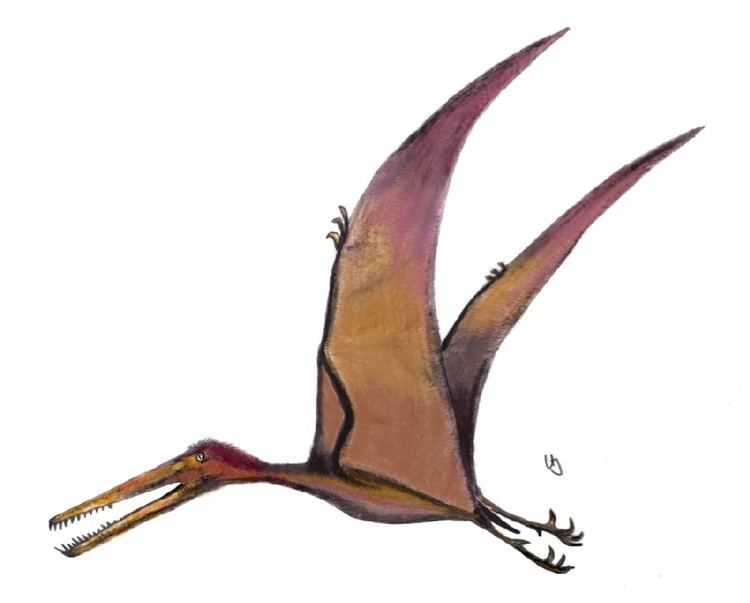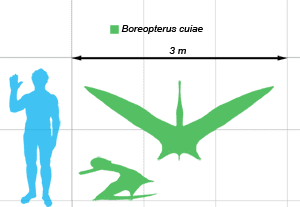Species †B. cuiae Phylum Chordata Order Pterosaurs | Class Reptilia Scientific name Boreopterus cuiae Rank Genus | |
 | ||
Similar | ||
Boreopterus is a genus of pterodactyloid pterosaur from the Barremian-Aptian-age Lower Cretaceous Yixian Formation of Dalian, Liaoning, China.
Contents
The genus was named in 2005 by Lü Jinchang and Ji Qiang. The type species is Boreopterus cuiae. The genus name is derived from Greek boreios, "northern" and pteron, "wing". The specific epithet honours Cui Xu.

The genus is based on holotype JZMP-04-07-3, a nearly complete but crushed skeleton and skull. The skull is 235 millimeters long (9.25 inches), low and elongated with a rounded tip. Its wingspan is estimated to have been around 1.45 meters (4.76 feet). Its teeth, especially the anterior nine pairs, are quite large, forming a mesh of sharp teeth at the front of the mouth; the third and fourth teeth from the front are the largest. There are at least 27 teeth in each side of both the upper and lower jaws, which is a large amount.

Classification

Lü and Ji initially placed Boreopterus in the Ornithocheiridae when they described it in 2006, a classification which was supported later that year by David Unwin. However, Lü in 2006 published a cladistic analysis showing Boreopterus to be the sister taxon of Feilongus (together forming the new family, Boreopteridae) in a position more basal than Haopterus.

In 2013, a more comprehensive study of pterosaur relationships supported the close relationship of Boreopterus and Feilongus, as well as their relatively basal status among pterodactyloids. Andres & Myers (2013) found the "boreopterids" as the sister group of Cycnorhamphus within the archaeopterodactyloid group Gallodactylidae. However, subsequent analysis have found Boreopteridae to be indeed "pteranodontian" ornithocheiroids, composed of Boreopterus, Zhenyuanopterus and Guidraco, while Feilongus is a relative of Gnathosaurus.
Paleobiology

Pterosaurs like Boreopterus are interpreted by Unwin as soaring animals, like today's albatrosses and frigatebirds. However, it has also been suggested that boreopterids foraged while swimming, trapping small prey with their needle-like teeth, a method similar to that of modern Platanista dolphins.
It has been suggested that the closely related Zhenyuanopterus was merely the adult form of this animal.

